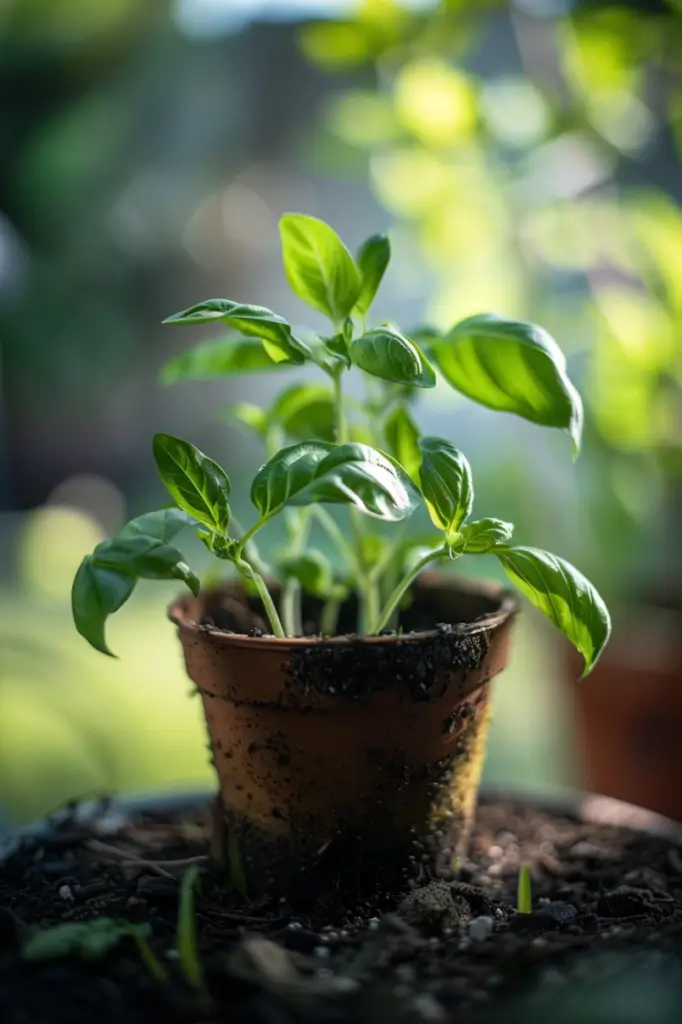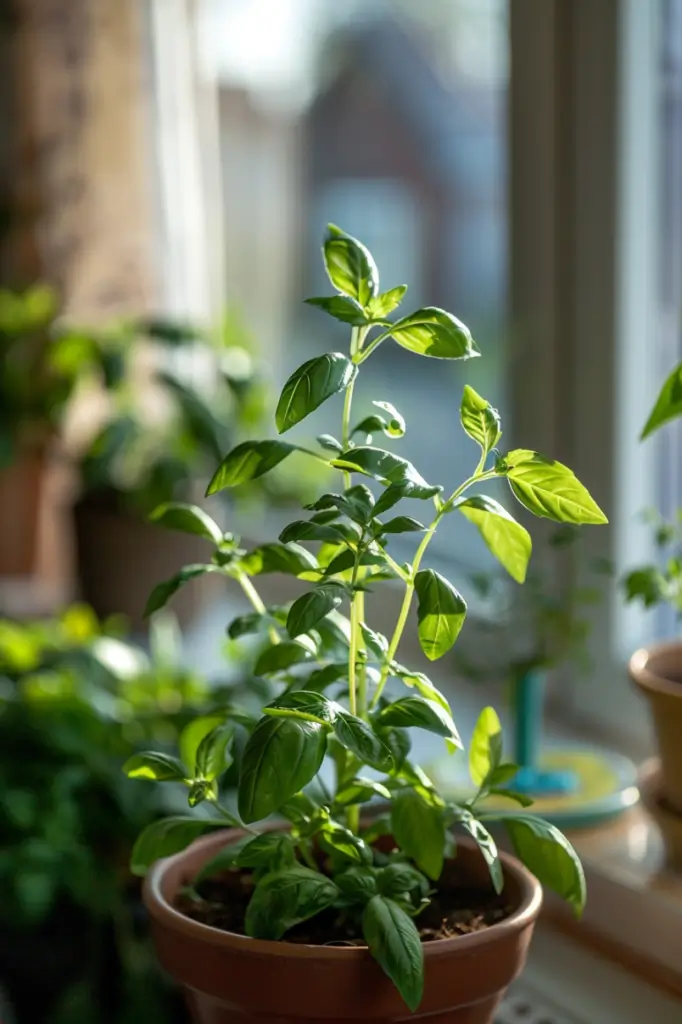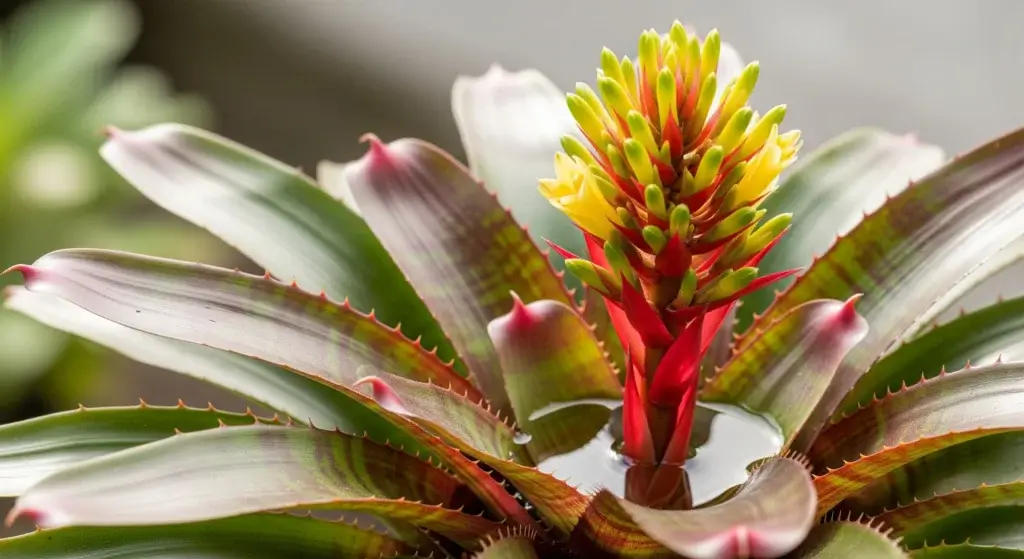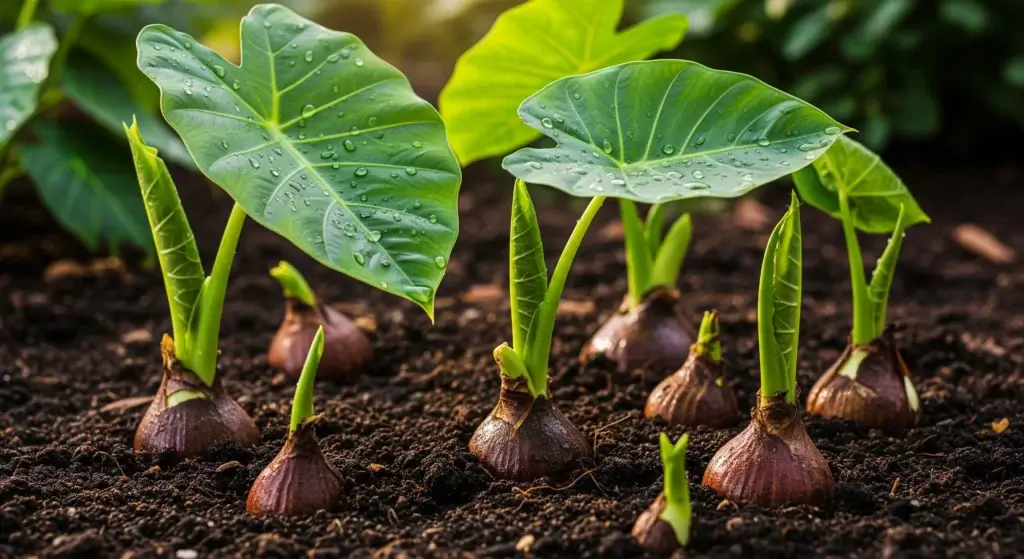
Basil is a beloved herb for many home gardeners and cooks.
Its aromatic leaves add a burst of flavor to countless dishes.
However, basil is a tender plant that doesn’t fare well in cold weather.
If you want to keep enjoying fresh basil through the winter months, you’ll need to bring it indoors.
This guide will help you learn how to overwinter basil, ensuring a steady supply of this delightful herb all year round.
Gathering Materials
Before you begin, gather the necessary materials to ensure a smooth transition for your basil plant.
- Container or pot: Choose a container with good drainage. Pots with holes in the bottom or self-watering planters are ideal.
- Draining dish or saucer: Place the pot on a draining dish or saucer to catch any excess water.
- Potting soil: Use a well-draining potting soil to avoid water pooling around the roots. A good potting mix will help maintain the right moisture levels for your basil.
- Trowel: A trowel is necessary for digging up the basil plant from your garden. It will help you carefully extract the plant without damaging its roots.
- Grow light: If you plan to keep your basil indoors, especially in a less sunny spot, a grow light can help supplement the natural light your basil needs to thrive.

- Read also: A Step-by-Step Guide: How to Overwinter Rosemary
- Read also: The Ultimate Guide: Tips on How to Overwinter Lemongrass
Preparing the Basil
If you want to bring your basil plant indoors, here’s a detailed guide to ensure it thrives in its new environment:
Dig up the basil
Start by gently digging up the basil plant from your garden.
Use a trowel to help you loosen the soil around the plant.
Be careful to avoid damaging the roots as you lift the plant out of the ground.
Take your time with this step to ensure the basil plant remains healthy and intact.
Trim the roots
Once you’ve dug up the basil plant, trim the roots to about 1-2 inches in length.
This is important because long roots can become waterlogged when the plant is potted indoors, leading to root rot.
Trimming the roots helps prevent this and promotes better water absorption and root health.
Pot the basil
Prepare the container
Choose a container with drainage holes to prevent water from accumulating at the bottom.
Fill the container with good-quality potting soil, which provides the nutrients and drainage the basil plant needs.
Plant the basil
Place the basil plant in the container, ensuring the soil level in the pot matches the soil level from where the plant was growing in the garden.
This helps the plant adjust more easily to its new environment.
Gently press the soil around the roots to eliminate any air pockets, which can cause the roots to dry out.

Caring for the Basil Indoors
After you’ve successfully potted your basil plant and brought it indoors, it’s important to follow these care tips to ensure it stays healthy and vibrant.
Lighting
- Plenty of sunlight: Basil thrives on sunlight. Place your basil plant in a sunny window where it can receive at least 6 hours of direct sunlight every day.
- Supplemental lighting: If your home doesn’t get enough natural light, especially during the winter months, you can use a grow light.
Watering
- Water sparingly: Basil prefers soil that drains well and doesn’t like to sit in water. Overwatering can lead to root rot, which can kill the plant.
- Proper watering technique: Water the plant until the soil is moist, but not soggy. Make sure any excess water can drain away to avoid waterlogged soil.
Temperature
- Consistent temperature: Basil grows best in temperatures between 65°F and 75°F (18°C to 24°C). Keep the plant in a room where the temperature remains steady.
- Avoid drafts and heat sources: Don’t place your basil near heating vents, air conditioners, or drafty windows.
Pruning
- Encourage bushy growth: Regular pruning helps your basil plant grow bushier and more robust. Pinch off the top sets of leaves regularly.
- Prevent leggy growth: If your basil starts to look tall and spindly, it needs more light and more frequent pruning.

Tips for Success
To help your basil thrive indoors, follow these additional tips.
They will address common challenges and ensure your plant remains healthy and productive.
Monitor for pests
- Regular checks: Inspect your basil plant regularly for pests such as spider mites, mealybugs, or aphids.
- Organic pest control: If you notice pests, act quickly using organic methods. Neem oil is a natural pesticide that can be sprayed on the plant to deter pests.
Maintain humidity
- Humidity needs: Basil prefers a humid environment, which can be a challenge indoors, especially in winter when indoor air tends to be dry.
- Humidity tray: Increase humidity around your basil plant by placing the pot on a tray filled with water and pebbles.
- Misting: You can also mist the leaves of your basil plant with water a few times a week to maintain humidity. However, avoid overdoing it to prevent fungal diseases.
Repotting
- Signs of being pot-bound: If your basil plant becomes pot-bound, meaning its roots grow densely and circle the inside of the pot, it’s time to repot.
- Repotting process: Choose a slightly larger container with good drainage. Carefully remove the plant from its current pot and gently loosen the roots.

- Read also: Don’t Say Goodbye! How to Overwinter Your Pepper Plants
- Read also: A Beginner’s Guide: Tips on How to Overwinter Begonias
Conclusion
Overwintering basil is a rewarding process that allows you to enjoy fresh herbs even in the coldest months.
By carefully digging up, potting, and caring for your basil plant indoors, you can ensure its survival and productivity.
Remember to provide adequate light, monitor watering, and maintain a suitable temperature to keep your basil thriving.
With these steps, you’ll have a continuous supply of fragrant basil leaves to enhance your cooking all year round.



